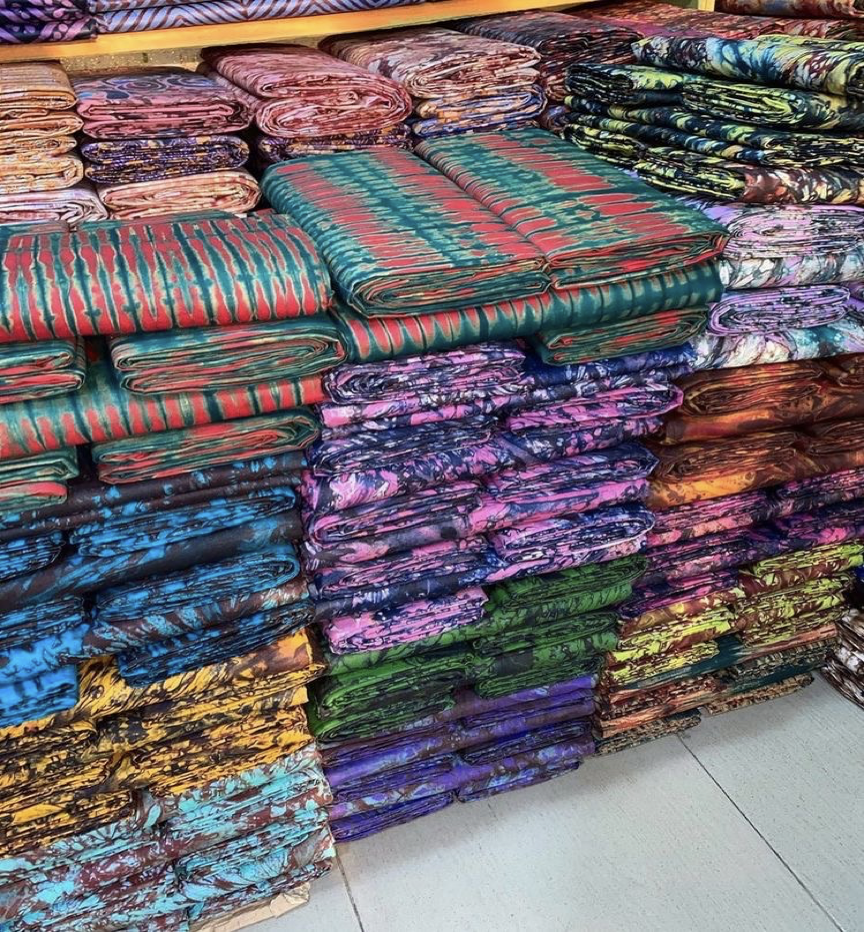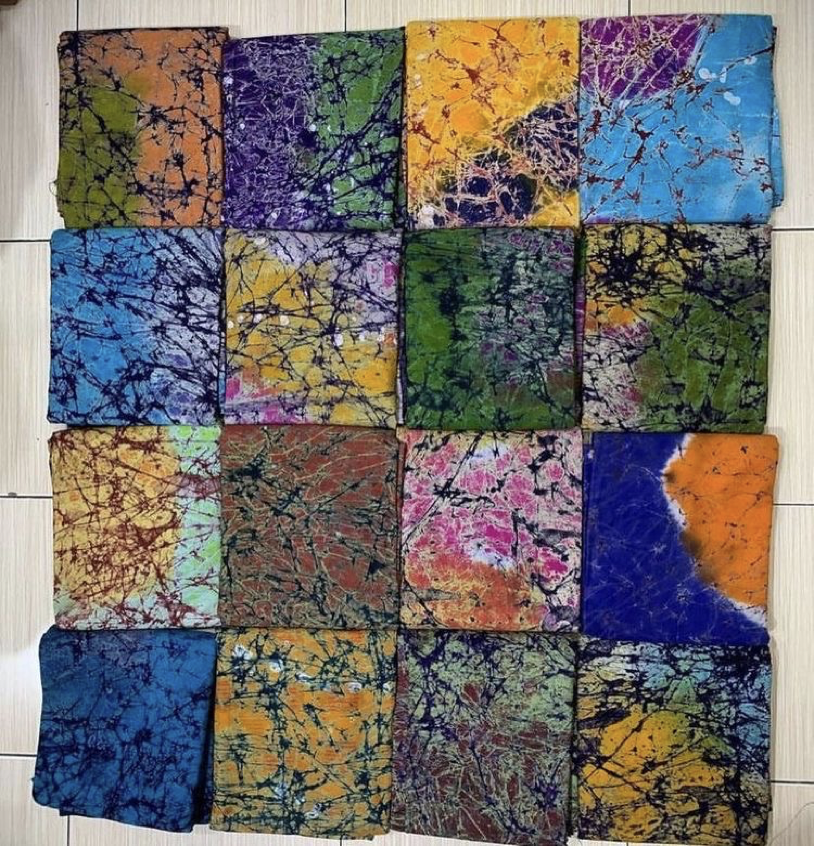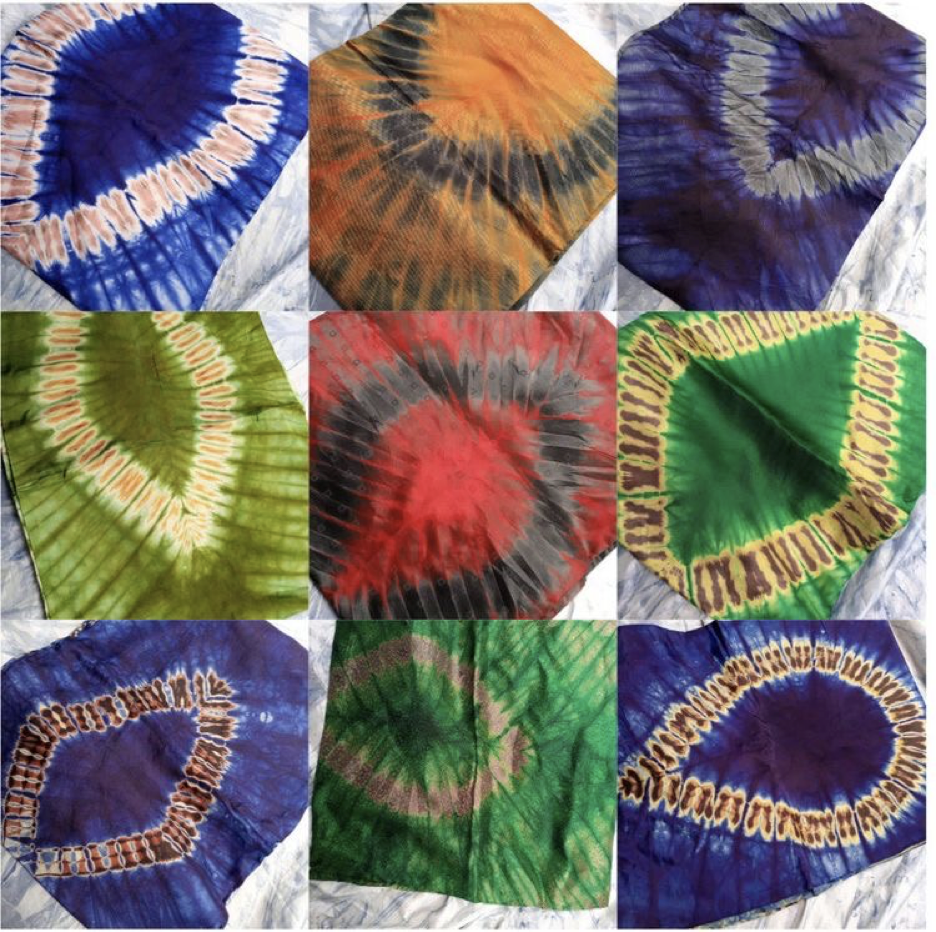In the tapestry of Nigerian culture, there is a remarkable thread that tells the story of magnificent fashion craftsmanship created from the most insignificant and disregarded pieces. Ordinary materials are transformed into stunning works of art in a symphony of unmatched talent and limitless creativity. The artistry of their clothing is evidence of the creativity and resourcefulness that run through the Nigerian people.
Vibrant colours, elaborate patterns, and bold motifs may come to mind when you think of Nigerian culture. The Yoruba are an ethnic group that primarily resides in Nigeria and the neighbouring territories. They are renowned for having a rich cultural heritage that is rooted in both history and tradition. The art of Adire is one of Yoruba culture’s most distinctive and cherished facets. The Yoruba people place great importance on this age-old resist dyeing process that has been handed down through the centuries.
Adire, which translates to “tie and dye” in Yoruba, has a history dating back centuries. It is believed to have originated in the ancient city of Abeokuta, in present-day Ogun State, Nigeria. The technique was traditionally practiced by Yoruba women, who employed their creativity and skill to produce intricate designs on locally-woven cloth.
During the early 20th century, European textile merchants began to spread throughout Abeokuta and other Yoruba towns, providing access to large quantities of imported shirting material. This newfound influx of materials led to a surge in entrepreneurial and artistic efforts by local women, who began to create stunning adire pieces. As a result, adire became a major local craft in Abeokuta and Ibadan, attracting visitors and tourists from all over the world.

The art of Adire was initially created using indigo dye, derived from the indigofera plant, which was grown in the region. Over time, the process evolved with the introduction of imported dyes and the incorporation of new patterns and motifs.
The art of Adire-making is a beautiful and intricate process that requires a great deal of skill and dedication. The Yoruba artisans who create these stunning pieces are true masters of their craft. The process can be divided into two main techniques: “Adire Oniko” and “Adire Eleko”. In the “Adire Oniko” method, the cloth is carefully folded and tied in various ways before being immersed in the dye bath. The tied or folded areas resist the dye, creating intricate and unique patterns that are simply breathtaking. In contrast, “Adire Eleko” involves applying a starchy paste made from cassava flour or other natural materials onto the fabric in specific designs. The paste acts as a resist agent, preventing the dye from permeating the coated areas. Once the dyeing process is complete, the paste is washed off, revealing the distinct patterns. The process of creating Adire is truly a work of art, and one that requires a great deal of patience, skill, and dedication.
Within the captivating realm of Adire designs lies a treasure trove of artistry and cultural depth, where each pattern weaves an intricate tale of meaning and heritage. Far beyond their sheer beauty, these designs carry the very essence of Yoruba traditions, drawing inspiration from the natural world, ancient mythology, and the tapestry of everyday life.

Each pattern is a one-of-a-kind representation of the many characteristics of Yoruba culture. Each stroke in the composition tells an intriguing story, photographing occurrences of celebration, rituals, and social distinction. Examples include the rhythmic undulations of “Olokun,” embellished with waves and fish motifs, paying homage to the powerful deity of the sea and prosperity, and the endearing embrace of “Eja Ibeji,” celebrating twins and symbolising fertility within Yoruba families.
Notably, the mystical “Alabere” pattern imprints the wearer with blessings and protection in the form of handprints. These deeply symbolic designs transcend mere aesthetics as they become carriers of tradition and protectors of heritage as they become entwined with life’s fabric.
One can see a doorway into the rich legacy of Yoruba history in the threads of each Adire design. Their continued existence is evidence of the ageless wisdom and respect for ancestors that have been passed down through the years like an unquenchable flame of cultural splendour.
Thus, while you take in the detailed patterns and brilliant hues that dance across the fabric, you additionally engage in the stories of a spirited community of individuals who cherish and celebrate life’s most important moments. As they unfold like a long-lost scroll of art and narrative, Adire designs serve as a testament to the very heart of Yoruba culture and are cherished and repeated endlessly.

In the social identity of the Yoruba people, adire is crucial. The fabric is more than just a piece of clothing; it is also a representation of ethnic pride and tradition. Historically, some Adire designs were worn only by royalty and other high-status individuals, while others were designated for celebrations, marriages, and other important occasions.
Additionally, Yoruba people use the wearing of Adire clothing as a means of reaffirming their cultural identity and establishing a connection to their ancestors. It strengthens the links between generations by fostering a sense of permanence and inclusion within the wider community.
Adire is significant for the Yoruba people economically as well as culturally. A vibrant textile sector is supported by the art form, creating employment possibilities for many artisans and traders. Many Yoruba families now depend heavily on Adire as a source of income because to the rising demand for it.
An organised campaign to promote and preserve Adire culture has recently been launched. Governmental and non-governmental organisations have launched programs to empower and train craftspeople in order to preserve this age-old trade. Further sustaining the art form and adding to the Yoruba cultural heritage, Adire’s international acclaim and admiration have increased business opportunities worldwide.
Adire is a living and breathing aspect of Yoruba culture, not just a traditional resist-dyeing process. It has been passed down from generation to generation and is a significant component of Yoruba identity. Adire’s elaborate designs and symbolic meanings are a physical manifestation of their ancestry, history, and inventiveness. Yoruba people take pride in their cultural history as the globe becomes more connected, and Adire is their method of sharing their story with the world. Adire continues to unify the community and strengthen their distinct cultural history via continuing preservation efforts and growing global awareness.
Sources




